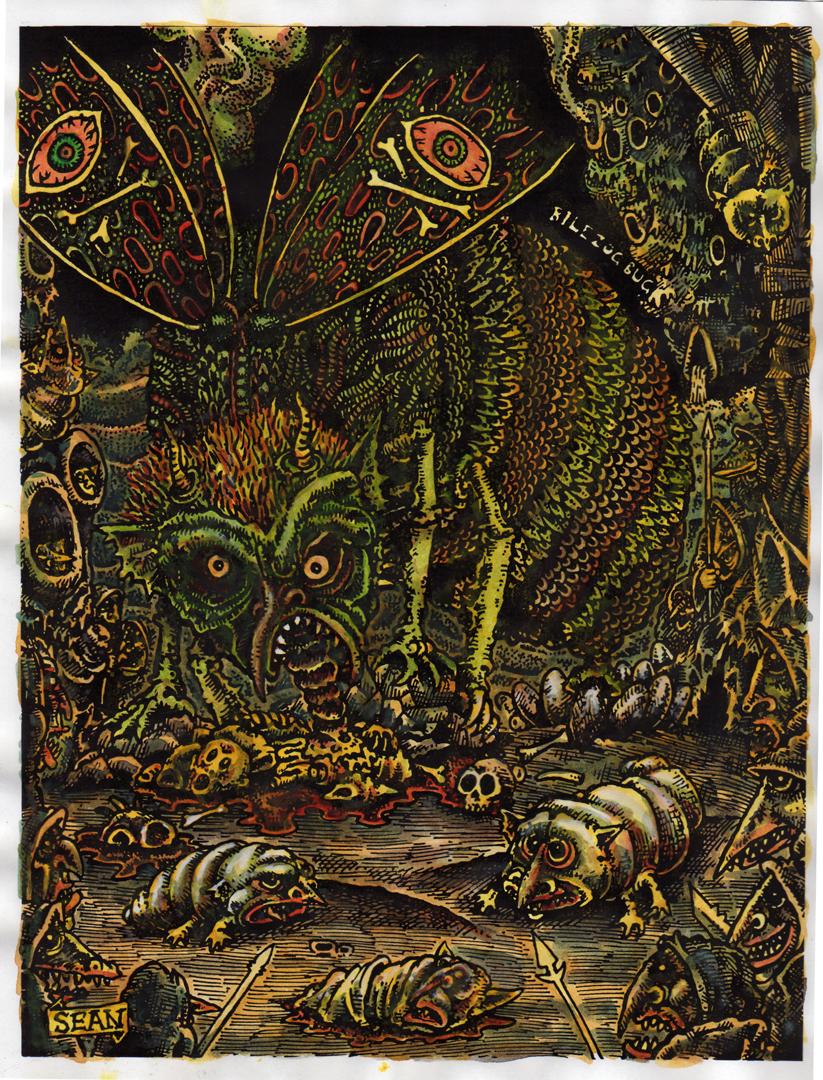The trend to account for the species of the game world may be traced back to its origins in Gygaxian "Naturalism". Monster ecology was arguably more a feature of Advanced Dungeons & Dragons and later games than the three booklets of the original game. The Monster Manual, for example, puts forth a thorough description of Orc biology, economy and society. In comparison, Original Dungeons & Dragons makes only scant and incomplete depictions of its monsters, often referring back to Chainmail which in turn merely draws upon Tolkien and classic fantasy. When Volume 2 does describe a monster, the portrayal is noticeably at odds with what would become the D&D canon. Consider Gnolls, who are initially described as a "cross between Gnomes and Trolls", are then related to Lord Dunsany's "gnoles" in The Book of Wonder (1912) and are finally illustrated to be some gibbering, hunched over, pointy-eared humanoid. Whether this apparent lack of homogeneity should be written off as accidental or deliberate, it is clear these three, disparate images create a sort of cognitive space for the Gnoll to develop in those early homebrewed D&D worlds. I believe this space of cognitive dissonance is critical to the legacy of the original Dungeons & Dragons, evidence of the spontaneous creativity and malleability that game encouraged.
Since then, despite the canonical presentation of monsters presented by TSR, the original spirit of the game has persisted, giving rise to countless personal interpretations with referees cleaving their own territory from both surrealism and naturalism. While creating a monstrous cosmology is a great deal of the fun of forging a new world, it often proceeds on a merely intuitive level as a compromise of what seems "cool" and what seems convincing. This balance between the surreal and the natural belies a deeper function of monster-making. We often forget that monsters are one of the core pillars of our fantasy imagination: much more than cohabitants for the world that the heroes will explore, they are made of the stuff of magic, meant to convey the Otherness deeply rooted in fantasy settings.
To this end, I much prefer a monster mythology to a cosmology. Whereas the latter concerns itself with how monsters are, a mythology is ambivalent to the "Truth" about its subject, instead sufficing to (very deliberately) pursue the narrative impact of the monster. To credit an excellent example of this, I would refer to Ken Hite's genius portrayal of the Cthulhu Mythos in Trail of Cthulhu. In that roleplaying game, the alien deities, blasphemous powers and otherworldly creatures are not presented with a fixed biography (whether surrealistic or naturalistic), but are rather offered through manifold different descriptions, each varying wildly in content and form. Instead of giving the referee a clear picture of how to use the monster, he or she is confronted with a bewildering arrangement of myths. The point here is not to offer several options and have the referee choose whether a particular "outer god" is either mindless cosmic radiation seeping in from another dimension or an actual alien creature trapped in the natural tunnels underneath Chicago. Rather, the decontextualization creates a level of confusion that naturally plays off fundamental imaginings at the sedimentary level of our creative consciousness. Instead of constructing elaborate cosmologies on top of our primitive dreams, myth breaks down our structured and categorical approach to subduing the world and looses the root fantasy extant from when humankind first looked into the deep, dark wilderness of the forest from the safety of civilization.
In a way, original Dungeons & Dragons invokes this primitive state, especially when viewed through novice and unsophisticated eyes. Unfortunately, it may be hard the jaded modern to scrub his or her imagination of the now canonical monsters that inundate the discourse. A return to the original fantasy is recommended here, with a keen eye for the fairy tales and short stories read in one's youth. Only by peeling back the stale orthodoxy of modern fantasy, ironically polluted by gaming influences, and being especially cognizant of monsters as literary devices, can we reclaim a world that is entirely Other, yet speaks more deeply to our ancient, inalienable mythic awareness.


Kewl...but am I still allowed to hit the DM's precious little snow-flake creations with my axe?
ReplyDelete:P
Very very very inspirating post with a little Levinas :)
ReplyDelete